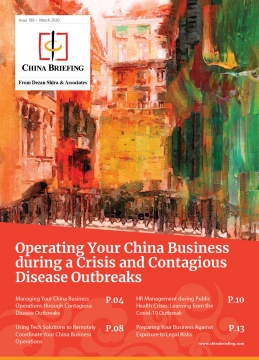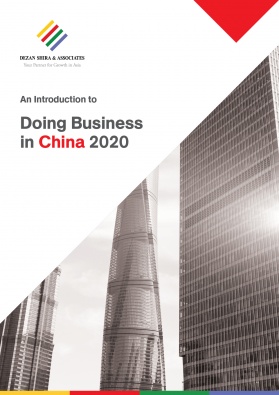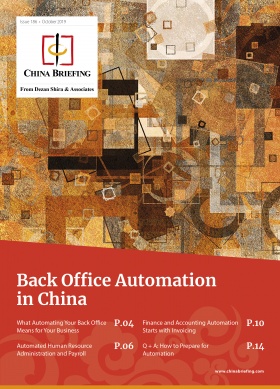COVID-19 in China: Businesses Lose Less, Work Resumes Faster Than Expected
Op/Ed by Chris Devonshire-Ellis
The impact on businesses operating in China, and the resumption of China factory deliveries, has been less of a problem than initially appeared would be the case during the first two months of 2020. Dezan Shira & Associates, with 300 China staff and 12 mainland China offices, have reported just a 3 percent drop in revenues for the January-February 2020 period, compared with the same period last year.
China Managing Director Alberto Vettoretti has stated: “Things are going back to normal in Hong Kong and in Guangdong Province. The impact is being felt across all industries but at least there is some light at the end of the tunnel.”
Walter Ruigu, the Managing Director of Camal Group in Beijing states on his LinkedIn account, “As more factories return to work, I had some concern with the possibility of a force majeure claim preventing one of our suppliers in Shandong from fulfilling our client’s order. To my surprise, the cargo was manufactured in less than 2 days – the fastest they have ever delivered product to us in the past 3 years. The reason was simple, most of their clients are domestic companies and with a fall in demand, our overseas client’s order had priority.”
“A few points are emerging with regards to the China supply chain:
1. Capacity means nothing without context. Our supplier’s capacity is at 40 percent but producing export cargo in record times. Capacity must be placed in the context of demand in order to understand the implications of a low number. For example, when domestic demand returns and is unmatched by increased capacity, delays (and perhaps more force majeure claims) will become common.
2. Knowing your suppliers’ financial standing or influence in their locality is crucial as it is still too early to determine who will get the loans and subsidies that have been promised. The cash flow situation is definitely precarious for many manufacturers, but those that are large tax contributors and large employers will be at the forefront of any subsidies.”
There are lessons to be learned from this: businesses that had adapted to a digital work base – allowing employees to work from home – have performed better than those that haven’t invested in new technologies. As Dezan Shira & Associates Adam Livermore explains, “While the COVID-19 outbreak poses a short-term challenge for China, in the medium- to long-term it may provide the catalyst for companies in China to enthusiastically adopt the remote working concept, supplemented by the wide range of technology tools already available to increase worker efficiency.”
 Operating Your China Business During a Crisis and Contagious Disease Outbreaks
Operating Your China Business During a Crisis and Contagious Disease Outbreaks
More on the use of technology to mitigate against circumstances such as COVID-19 and handling other business management issues during the outbreak can be obtained from the complimentary China Briefing download here.
As always there are people with differing opinions. Some US blogs have suggested that North American investors in China should relocate to Mexico as a suitable home for them to manufacture and service the United States from. These knee-jerk reactions haven’t been well thought through – despite the COVID-19 problems, foreign investors by and large have stuck with China at this time – there is no “heading for the hills”.
And as we point out – concerning Mexico as an option: “There is an issue in Mexico with sourcing components. Mexico imported US$66 billion from China last year, while China imported just US$5 billion from Mexico. In short, what this means is that even if a US manufacturer or sourcing business relocated its operations to Mexico, it would still find itself reliant on Mexican imports from China, and especially of component electrical and auto parts. Basically, moving to Mexico won’t stop the China reliance.”
These differing opinions show who to stick with in terms of China – businesses based in China itself. Walter Ruigu’s comment that his overseas clients were getting fast-track China deliveries as the Chinese domestic market is recovering is a far better observation from a business on the ground than any American firm in the US is going to be capable of providing by just reading the news. Likewise, in professional services, China firms that have invested in technology have the upper hand.
China’s own, and often much criticized reaction to COVID-19, has actually demonstrated that while it is debatable as to whether or not the outbreak could have been contained, it was well managed after that and subsequent recovery times are in fact rapid. The China option, in many cases, still remains – China. Re-energized China suppliers are now fast pushing export products out, while a 3 percent drop in revenues is more than recoverable.
Related Reading
About Us
China Briefing is written and produced by Dezan Shira & Associates. The practice assists foreign investors into China and has done since 1992 through offices in Beijing, Tianjin, Dalian, Qingdao, Shanghai, Hangzhou, Ningbo, Suzhou, Guangzhou, Dongguan, Zhongshan, Shenzhen, and Hong Kong. Please contact the firm for assistance in China at china@dezshira.com.
We also maintain offices assisting foreign investors in Vietnam, Indonesia, Singapore, The Philippines, Malaysia, and Thailand in addition to our practices in India and Russia and our trade research facilities along the Belt & Road Initiative.
- Previous Article China Plus One Series: Indonesia’s Appeal to Foreign Investors in Asia
- Next Article China’s COVID-19 Recovery: What Lies Ahead for Foreign Investors






